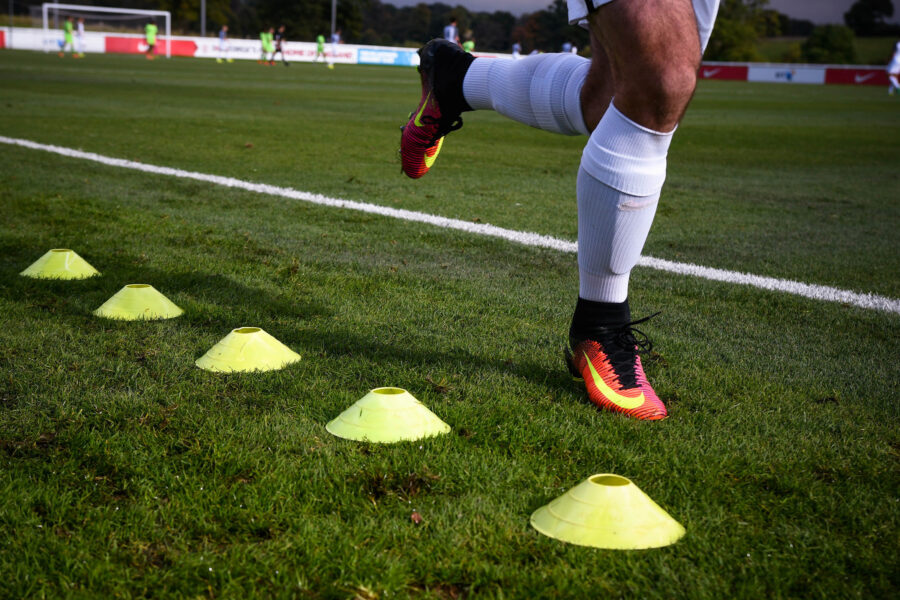Use video to help players learn game fundamentals and develop their technique while reducing their risk of injury.
They say practice makes perfect—and to an extent, they’re right. Conditioning, drills and scrimmages are necessary to improve your soccer team’s performance. But is it possible to have too much of a good thing?
Turns out, it is. The dangers of overtraining, especially for youth sports, have been well-documented.
For most players, soccer is a year-round sport. Rest periods can be hard to come by. It’s important players aren’t overdoing it during practice or training for too many hours per day. If your athletes get injured, they’re definitely not going to improve. (One of the most common soccer injuries, an ACL tear, can take a player out of the game for up to eight months.)
Luckily, there’s a way to reduce the risks of overplaying while reinforcing the lessons you teach your athletes during field time. Here’s how you can structure your practice around video and limit the possibility of overuse injuries.
1. Shorten Your Practice Sessions
A recent study found that 60% of injuries reported during practice happened after an hour into the session—proving more doesn’t always equal better.
Try it with your team: Get your athletes running drills on the field for an hour, but start or wrap up practice with video review. If you’re watching at the beginning of practice, point out key things from your last game players can work on. On the other hand, using video to wrap up practice gives the team something to think about for next time, especially if you’re analyzing that day’s session. You can even schedule video-only practices following a game to keep your team focused as they rest.
2. Learn From the Pros
We improve by learning from the best, so dedicate time to show your team professional game footage.
Try it with your team: If you’re trying to emulate a certain style of play, your team can watch and analyze an example from the pros to see their movement within a formation. Have your players find video of their favorite pro players and upload clips into Hudl to analyze what they’re doing during a specific play. Turn an individual exercise into one that’ll benefit everyone by asking them to share their observations with the team.
3. Scout Your Opponents
Knowing what you’re up against is critical to your team’s success. Use video to give your team a snapshot of who they’re facing.
Try it with your team: You don’t need to watch every game your opponent’s ever played—just 20–30 minutes can give your players the confidence they need going into game. (See how one state championship coach gets quick, effective scouting insights.) Streamline scouting by preparing a report for your team to take home and review. Then spend some time watching your opponent’s video as a team. Look for common areas of strengths and weaknesses and strategize with your staff on using those to your advantage. Involve the whole team by telling athletes to focus on the members of the opposing team playing their specific position.
4. Focus on Key Set Pieces
Set pieces were a major focus in the last World Cup, and video can help you dial in on specific plays.
Try it with your team: Keep players engaged by only showing them the most relevant film. Build a playlist of 10 key clips that shows what you’d like to focus on and spend 10-15 minutes reviewing them. If you’re reviewing prior to getting out on the field, have the team self-review how well they applied what was covered during the film session to their practice.
5. Prepare Players for Their Future
Professional-length practices might seem like the best way to help players advance, but training at a level that’s not age-appropriate will ultimately do more harm than good (remember those season-ending ACL tears).
Try it with your team: Video is a risk-free way to get your athletes ready for the next level of play. Film review is the norm at the collegiate level—even teams that aren’t using analysis software like Hudl are watching video to prepare for their games. Players who are serious about competing at the collegiate level will want to put in time outside of practice. Ask athletes to create a playlist with three things they did well and three things they can improve on, then have some back-and-forth with them in Hudl.
If you’re ready to increase player understanding while reducing risk of injury, it’s time to introduce video into your practice schedule. Watch our class on using video to bridge the gap between games and training to get started.
